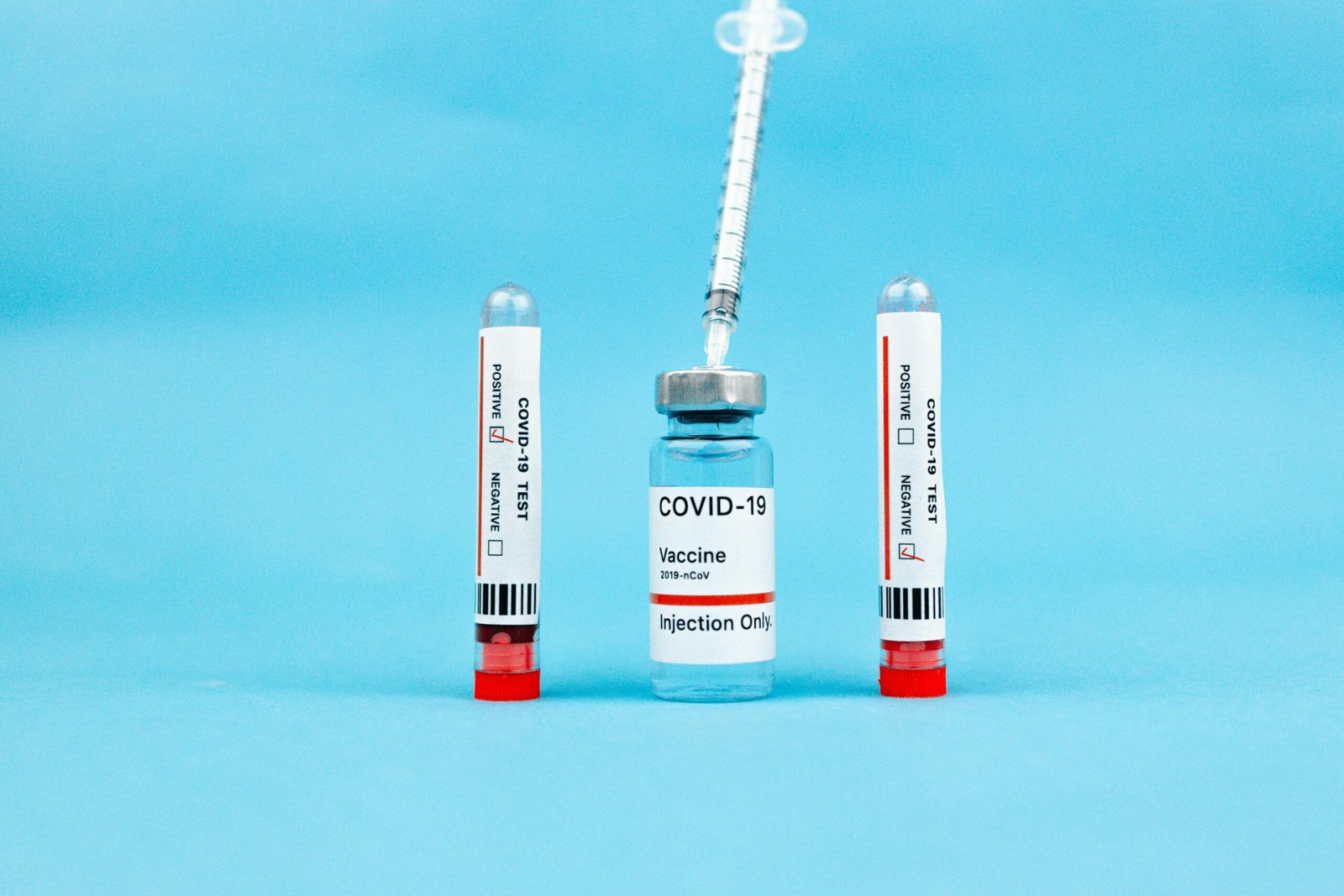
Are you an urban farmer looking for effective strategies to improve the quality of your soil? In the world of urban farming, soil testing and remediation play a crucial role in ensuring healthy crop growth. By understanding the composition and potential contaminants in your soil, you can implement targeted remediation techniques to optimize the nutrients and minimize harmful elements. In this article, we will explore various strategies that will empower you to perform soil testing and remediation with ease, allowing you to cultivate a thriving urban farm. So let’s dig into the world of urban farming and discover the secrets to soil success!

Importance of Soil Testing in Urban Farming
Soil testing plays a vital role in the success of urban farming. As an urban farmer, it is essential to understand the composition and quality of the soil in order to make informed decisions about crop selection, fertilizer application, and overall soil management. Soil testing provides valuable insights into the physical, chemical, and biological properties of the soil, allowing you to create a productive and sustainable urban farm.
By conducting regular soil tests, you can determine the specific needs of your soil and make necessary adjustments to ensure optimal growing conditions for your crops. This not only promotes better plant growth and yield but also helps prevent potential soil contamination and erosion. Ultimately, soil testing allows you to create a healthy and nutrient-rich environment for your crops, contributing to the overall success and sustainability of your urban farm.
Types of Soil Testing Methods
Soil Sampling Techniques
One of the first steps in soil testing is the collection of soil samples. This process involves obtaining representative samples from various areas of your farm to get an accurate understanding of your soil’s characteristics. There are several soil sampling techniques you can use, including random sampling, grid sampling, and zone sampling.
Random sampling involves collecting soil samples from different locations across your farm, ensuring that each sample is representative of the overall soil composition. Grid sampling involves dividing your farm into smaller grids and collecting samples from each grid to create a more detailed soil map. Zone sampling, on the other hand, focuses on specific areas or zones within your farm, such as areas with different soil types or past land usage.
Physical Soil Testing
Physical soil testing analyzes the physical properties of the soil, such as texture, structure, and compaction. Texture refers to the proportion of sand, silt, and clay in the soil, which affects its drainage, water-holding capacity, and nutrient retention. Soil structure refers to how particles in the soil bind together, which affects root penetration and aeration. Compaction refers to the density of the soil, which can hinder water infiltration and root growth.
Physical soil testing methods may include determining soil texture using the ribbon test or the jar method, assessing soil structure through visual observation and hand-feel, and measuring compaction using a penetrometer or the thumb test. By understanding the physical properties of your soil, you can make appropriate amendments and adjustments to improve its structure and overall productivity.
Chemical Soil Testing
Chemical soil testing analyzes the chemical composition of the soil, including its pH level, nutrient content, and presence of contaminants. pH level is a measure of the soil’s acidity or alkalinity and is crucial for nutrient availability to plants. Nutrient content refers to the levels of essential elements such as nitrogen, phosphorus, potassium, and micronutrients that are necessary for plant growth. Contaminants, such as heavy metals or pesticides, can also be detected through chemical soil testing.
Chemical soil testing typically involves sending soil samples to a laboratory for analysis. The lab will conduct tests to determine the pH level, nutrient levels, and contaminants present in your soil. Based on the results, you can adjust pH levels using soil amendments, apply fertilizers to address nutrient deficiencies, and take necessary actions to mitigate or reduce soil contaminants.
Biological Soil Testing
Biological soil testing assesses the biological activity and health of the soil by measuring the presence and abundance of microorganisms, earthworms, and other beneficial soil organisms. These organisms play a crucial role in nutrient cycling, soil structure formation, and overall soil health. By evaluating the biological aspects of your soil, you can gauge its fertility and its potential to support a diverse and thriving ecosystem.
Biological soil testing can be done through various methods, such as microbial analysis, earthworm counting, and nematode analysis. These tests provide insights into the soil’s microbial diversity, nutrient cycling potential, and pest and disease risks. With this information, you can implement specific soil management practices to enhance biological activities and promote a healthy soil ecosystem in your urban farm.
Factors to Consider in Soil Testing
Land History and Usage
The history and previous usage of the land can greatly influence the composition and quality of the soil. Understanding the land’s history, such as previous agricultural practices, construction activities, or presence of contaminants, is crucial in planning soil testing and remediation strategies. If the land was previously used for industrial purposes or has a history of contamination, additional testing and remediation may be necessary to ensure safe and productive urban farming.
Contamination Sources
Identifying potential contamination sources is essential in determining which contaminants may be present in the soil and affecting the health of your crops. Contamination can come from various sources, such as nearby industrial facilities, roadways, or improper waste disposal. By pinpointing potential contamination sources, you can prioritize and tailor your soil testing efforts to identify and mitigate specific contaminants that may be impacting your urban farm.
Climatic Conditions
Climatic conditions, including rainfall, temperature, and humidity, can impact the natural processes occurring in the soil. Different regions and climates have varying soil compositions and characteristics. Understanding the climatic conditions in your area allows you to anticipate potential challenges and adjust your soil testing and management strategies accordingly. For example, areas with high rainfall may experience higher leaching of nutrients and may require more frequent soil testing and monitoring.
Crop Requirements
Different crops have unique nutritional needs and grow best under specific soil conditions. Understanding the nutritional requirements and sensitivities of the crops you plan to grow is crucial in interpreting soil test results and making appropriate adjustments. Soil testing helps you determine the nutrient levels and pH levels required to promote optimal crop growth. By tailoring your soil management practices to meet the specific needs of your chosen crops, you can maximize their productivity and overall health.
Recommended Soil Testing Frequency
Soil testing should be conducted on a regular basis to ensure ongoing monitoring and adjustment of soil conditions. The exact frequency of soil testing may vary depending on factors such as land history, contamination risks, and crop requirements. Generally, it is recommended to conduct soil testing at least once a year to assess and adjust soil conditions before each growing season.
Areas with higher contamination risks may require more frequent soil testing, especially if remediation efforts are ongoing. Additionally, if you notice changes in plant health, reduced yield, or other signs of nutrient deficiencies or imbalances, it is important to conduct soil tests to identify and address the underlying issues. Regular soil testing allows you to maintain a productive and healthy urban farm by providing timely information for effective soil management.

Interpreting Soil Test Results
Understanding Soil Analysis Reports
Interpreting soil analysis reports can seem daunting at first, but with some basic knowledge, you can make sense of the results and understand how to adjust your soil management practices. Soil analysis reports typically include information about pH levels, nutrient content, and contamination levels. Each element is usually presented with a numerical value, along with a reference range for optimal growth.
Understanding the reference range is key to determining whether your soil is deficient or excessive in specific nutrients. If a nutrient falls below the reference range, it indicates a deficiency, and appropriate amendments or fertilizers should be applied. If a nutrient exceeds the reference range, it may lead to imbalances or even toxicity, requiring corrective actions or adjustments in fertilizer application. By familiarizing yourself with the information presented in the soil analysis report, you can make informed decisions about soil amendments and adjustments.
Identifying Soil Imbalances and Deficiencies
Soil test results provide valuable insights into nutrient imbalances and deficiencies, helping you identify and address specific issues in your soil. Imbalances or deficiencies in essential nutrients, such as nitrogen, phosphorus, and potassium, can significantly impact plant growth and yield. By understanding which nutrients are lacking or excessive in your soil, you can apply targeted fertilizers or soil amendments to correct these imbalances.
For example, if your soil test reveals a phosphorus deficiency, you can add phosphorus-rich fertilizers to increase the nutrient levels. Similarly, if excessive nitrogen is detected, you can adjust fertilizer application rates to reduce nitrogen inputs. Regular soil testing allows you to monitor nutrient levels and make necessary adjustments to maintain optimal conditions for your crops.
Determining Soil Contamination Levels
Soil testing is a crucial tool in assessing contamination levels in urban farming. Soil analysis reports can indicate the presence of contaminants, such as heavy metals or pesticides, which may pose risks to plant health and food safety. Understanding the contamination levels in your soil helps you make informed decisions about the safety of your crops and implement appropriate remediation strategies.
If soil contamination is detected, it is essential to consult with experts or regulatory agencies to determine the severity of the contamination and the best course of action for remediation. Through soil testing, you can track the effectiveness of your remediation efforts and ensure that contamination levels are reduced to safe levels for urban farming.
Soil Remediation Techniques
Phytoremediation
Phytoremediation is a natural and cost-effective soil remediation technique that utilizes plants to remove or neutralize contaminants from the soil. Certain plants, known as hyperaccumulators, have the ability to absorb and accumulate heavy metals or other contaminants in their tissues. By planting these hyperaccumulators in contaminated soil, the contaminants can be extracted and safely disposed of, while the soil is gradually remediated.
Phytoremediation can be implemented in various ways, depending on the specific contaminants and the site conditions. One common approach is through phytoextraction, where plants absorb contaminants through their roots and translocate them to their above-ground parts. These plants are then harvested and removed, effectively removing the contaminants from the soil. Phytoremediation offers a sustainable and environmentally friendly solution to soil contamination issues in urban farming.
Composting
Composting is a widely recognized soil remediation technique that utilizes organic materials, such as food waste and plant debris, to improve soil structure and fertility. Through the decomposition process, organic materials break down into humus, a nutrient-rich substance that enhances soil moisture retention, nutrient availability, and overall soil health. Composting helps build healthy soil ecosystems and promotes beneficial microorganisms that can contribute to remediation efforts.
To remediate contaminated soil using composting, it is important to ensure that the composting process reaches temperatures high enough to break down or deactivate contaminants. This can be achieved through proper management of compost piles, including maintaining the right carbon-to-nitrogen ratio, proper aeration, and regular turning. By incorporating compost into contaminated soil, you can improve its overall quality and reduce the risks associated with contamination.
Biochar Application
Biochar is a type of charcoal produced through the pyrolysis of organic materials, such as crop residues or wood waste. Biochar has a porous structure that provides a habitat for beneficial soil microorganisms and improves soil water and nutrient retention capacity. It also has the ability to adsorb certain contaminants, reducing their availability and potential impacts on plants.
When applied to contaminated soil, biochar can help immobilize and retain contaminants, preventing them from leaching into groundwater or being taken up by plants. Biochar application also enhances soil fertility over the long term, promoting the growth of beneficial microorganisms and improving overall soil health. Incorporating biochar into your soil remediation strategies can help mitigate contamination risks and improve the sustainability of your urban farming practices.
Soil Amendments
Soil amendments refer to the addition of various materials to the soil to improve its physical and chemical properties. Common soil amendments include lime, gypsum, and organic matter such as compost or manure. Lime is used to adjust soil pH levels, while gypsum can improve soil structure and drainage. Organic matter, when added in the form of compost or manure, enhances soil fertility, moisture retention, and microbial activity.
Soil amendments can play a crucial role in remediation efforts by improving soil quality and creating a favorable environment for plant growth. Depending on the specific needs of your soil, you can select appropriate amendments to target deficiencies or imbalances identified through soil testing. Regularly incorporating soil amendments can gradually restore and enhance the health and productivity of your urban farm soil.
Chemical Remediation
In some cases, chemical remediation may be necessary to address significant soil contamination issues in urban farming. Chemical remediation involves the use of specific chemicals, such as solvents or chelating agents, to extract or neutralize contaminants in the soil. This method is typically more intensive and requires professional expertise to ensure safe and effective implementation.
Chemical remediation should only be considered when other remediation techniques have proven insufficient or ineffective. It is crucial to consult with experts and closely follow applicable regulations and guidelines when using chemical remediation methods. With proper planning and implementation, chemical remediation can help restore soil quality and reduce contamination risks in urban farming.

Considerations for Soil Remediation in Urban Farming
Environmental Regulations
When implementing soil remediation strategies in urban farming, it is essential to comply with relevant environmental regulations. Soil contamination in urban areas often falls under jurisdictional regulations, requiring adherence to specific guidelines and standards for soil testing, remediation, and land use. Familiarize yourself with local, state, and national regulations to ensure that your remediation efforts meet the necessary requirements for safe and compliant urban farming practices.
Safety Precautions
Soil remediation activities can involve potential risks, such as exposure to contaminants or hazardous substances. It is crucial to prioritize safety and take appropriate precautions to protect yourself, your workers, and the surrounding environment. This may include wearing protective equipment, following proper handling and disposal procedures for contaminated soil, and implementing measures to prevent the spread of contaminants.
Always consult with experts or seek professional guidance when dealing with potentially hazardous materials or complex remediation processes. By prioritizing safety, you can ensure the well-being of yourself, your team, and the community surrounding your urban farm.
Cost and Feasibility
Soil testing and remediation can involve financial costs, especially when specialized equipment, laboratory analysis, or professional services are required. It is important to carefully consider the financial implications of soil testing and remediation, particularly in the context of urban farming where resources may be limited. Prioritize essential soil testing needs and allocate your resources accordingly to maximize their effectiveness in supporting your urban farming goals.
The feasibility of soil remediation techniques should also be considered, taking into account factors such as site conditions, soil characteristics, and contamination levels. Some remediation techniques may be more suitable and effective based on the specific circumstances of your urban farm. Balancing cost and feasibility considerations will help you make informed decisions in selecting and implementing the most appropriate remediation strategies for your soil.
Effectiveness and Long-term Sustainability
In selecting soil remediation techniques, it is crucial to evaluate their effectiveness and long-term sustainability. The effectiveness of a remediation technique can vary depending on the soil characteristics, contaminants present, and specific goals of your urban farm. Consider the success rates and documented results of different techniques, and consult with experts or reference case studies to determine the most effective approach for your soil remediation needs.
Long-term sustainability should also be considered, as some techniques may have ongoing maintenance requirements or potential environmental impacts. Aim for remediation strategies that not only address immediate concerns but also contribute to the long-term health and sustainability of your urban farm. By considering both short-term effectiveness and long-term sustainability, you can implement soil remediation techniques that will support the success and longevity of your urban farming endeavors.
Monitoring and Maintenance
Regular Soil Testing
After implementing soil remediation strategies, it is important to continue monitoring the progress of your urban farm soil. Regular soil testing allows you to assess the effectiveness of your remediation efforts and make any necessary adjustments or corrections. By regularly testing your soil, you can track improvements in nutrient levels, soil structure, and contamination levels, ensuring that your urban farm continues to thrive in a healthy environment.
As your urban farm evolves and adapts over time, the soil’s needs may change. Regular soil testing provides valuable information to guide your ongoing soil management practices and ensure the long-term success of your farm.
Implementing Remediation Strategies
To maintain the effectiveness of soil remediation techniques, it is essential to implement strategies consistently and as recommended. This may include timely application of soil amendments, proper composting practices, or routine plantings for phytoremediation. By following recommended guidelines and best practices, you can maximize the benefits of your chosen soil remediation techniques and minimize the potential for issues or setbacks.
Consistency in implementing remediation strategies is key in gradually improving the quality and health of your urban farm soil. Monitoring the progress of your remediation efforts and adapting techniques as needed will contribute to the long-term viability and productivity of your farm.
Crop Rotation and Cover Crops
Crop rotation and cover cropping are additional practices that can contribute to soil health and fertility in urban farming. Crop rotation involves growing different crops in succession in the same area to prevent nutrient depletion and reduce the risk of disease and pests. Cover cropping involves planting specific crops, such as legumes or grasses, during periods when the main crops are not in season to improve soil structure, nutrient cycling, and weed suppression.
By incorporating crop rotation and cover cropping into your soil management practices, you can further enhance soil health, reduce the need for synthetic inputs, and support the overall sustainability of your urban farm. These practices can also contribute to the remediation process by promoting the growth of beneficial microorganisms and enhancing nutrient cycling.

Expert Tips for Successful Soil Testing and Remediation
- Start with a clear understanding of your goals and objectives for your urban farm, and tailor your soil testing and remediation strategies accordingly.
- Seek professional guidance or consult with experts in soil testing and remediation to ensure accuracy and effectiveness.
- Develop a systematic and consistent soil testing schedule to monitor changes and progress over time.
- Keep detailed records of soil testing results, remediation activities, and overall soil health to track improvements and guide future decision-making.
- Continually educate yourself on new developments and advancements in soil testing and remediation techniques to stay updated with best practices and emerging technologies.
- Regularly communicate with regulatory agencies or local agricultural institutions to ensure compliance with environmental regulations and obtain guidance on specific soil remediation requirements.
Case Studies of Successful Soil Testing and Remediation in Urban Farming
To further understand the practical application of soil testing and remediation techniques in urban farming, let’s explore a few case studies:
-
Case Study 1: Contaminant Remediation in an Urban Rooftop Farm: In this case, an urban rooftop farm located near a former industrial site was found to have elevated levels of heavy metals in the soil. Soil testing revealed the contamination, and phytoremediation using hyperaccumulator plants was implemented over several growing seasons. Regular soil testing showed a gradual decrease in heavy metal levels, ensuring a safe and productive rooftop farm.
-
Case Study 2: Soil Fertility Enhancement in an Urban Community Garden: In an urban community garden, regular soil testing indicated nutrient deficiencies and imbalances. Composting was introduced as a soil amendment strategy, utilizing organic waste from the community. Over time, soil testing showed improvements in nutrient content and overall soil fertility, resulting in healthier and more productive vegetable gardens.
These case studies highlight the importance of soil testing and targeted remediation strategies in urban farming. By understanding the specific needs of the soil and implementing appropriate and sustainable remediation techniques, urban farmers can create thriving and productive environments for their crops.
In conclusion, soil testing is crucial for successful urban farming. Understanding the physical, chemical, and biological properties of your soil through different testing methods allows you to make informed decisions for optimal crop growth and overall soil health. By considering factors such as land history, contamination sources, climatic conditions, and crop requirements, you can tailor your soil testing and remediation efforts to the specific needs of your urban farm. Implementing effective soil remediation techniques, monitoring progress, and maintaining soil health through regular testing and maintenance activities are key to sustainable and successful urban farming. With expert tips and insights, you can navigate the process of soil testing and remediation with confidence, ensuring the long-term viability and productivity of your urban farm.





